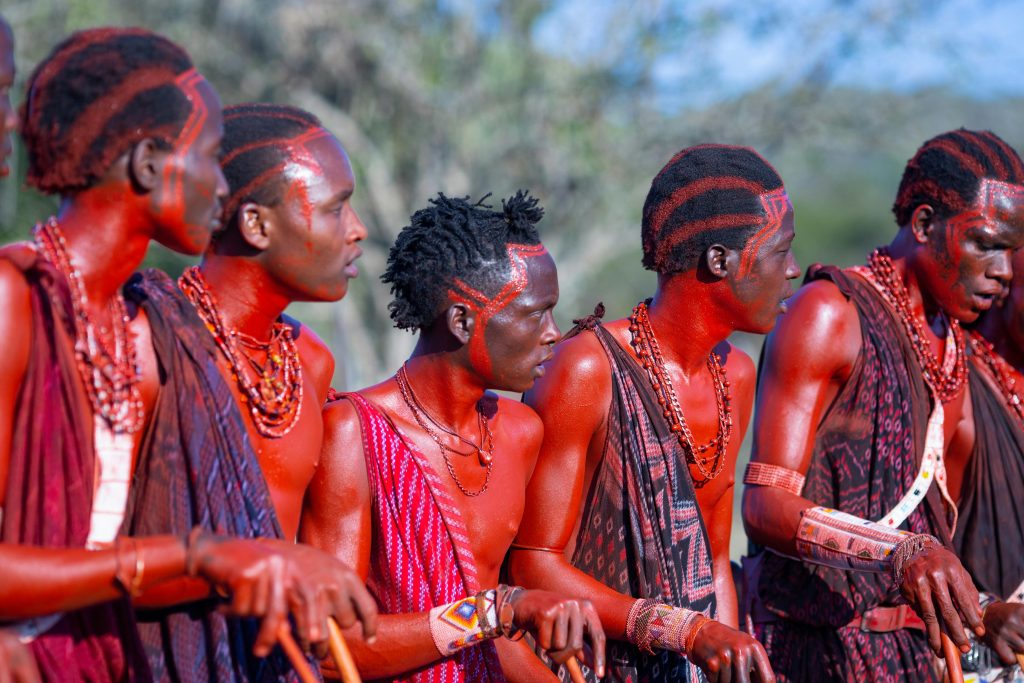By Alexis de La Ferriere, Royal Holloway College University of London
– – –
Introduction
One of the aims of our meeting in Belem was to develop a set of guidelines, identifying key principles which authorities around the world should observe in order to preserve and promote both indigenous rights and the right to freedom of religion. During our time together, one issue that became clear was that the notion of ‘indigenous peoples’ might be too narrow, as it does not recognise the rights claims of other traditional groups such as communities of African descent in Brazil. Indeed, the importance of traditions held and maintained within a group setting was a recurring theme in the presentations given by both indigenous and Afro-Brazilian representatives. For those of us coming from outside the Brazilian context, this theme was reminiscent of what we often hear from minority religious groups elsewhere.
Inspired by these exchanges, one of the articles in our guidelines (still in draft form) deals specifically with the issue of Education and Preservation of Traditions:
In ensuring the right to education for indigenous people and other cultural-religious minorities, efforts should be made to support the practice and revitalization of minority traditions, customs, and languages. In the pursuit of this aim, indigenous peoples and other cultural-religious minorities should have the right to establish and control their educational systems and institutions providing education in their own languages, in a manner appropriate to their cultural methods of teaching and learning , within the limits of peace and with respect for the non-derogable rights of individuals and, in particular, the rights of the child1.
As an initial observation, we can see that this draft article points to three distinct rights: the right to education for children2, the right of Indigenous peoples to practice and revitalize their cultural traditions and customs3, and the right to freedom of thought, conscience and religion4. However, we might also note that this draft article also explicitly states that indigenous peoples and other minority groups should have the right to establish and control their educational systems and institutions in a manner appropriate to their cultural methods of teaching and learning.5
I am convinced that this last point is of vital importance because the protection of group autonomy in matters of education is a necessary condition for traditional groups to maintain themselves as viable normative forms of life. Indeed, my view is that such group autonomy is crucial not only for indigenous peoples, but that the insight that the emerging body of indigenous rights offers into to this matter should alert us to its importance for cultural and religious minorities more broadly. Hence, my aim here will be to present a brief argument for why such group autonomy (which I will call teaching within a tradition) is actually a necessary condition both for the preservation and revitalization of traditional minority groups such as indigenous peoples and for the effective protection of religious liberty.
The Importance of Teaching within a Tradition
- A basic condition for the existence of cultural and religious groups is their ability to form and associate autonomous structures with the object of teaching and transmitting their core beliefs and practices to those who are not initiated within the tradition – and especially to children in the community.
- A consequence of this principle is that cultural or religious groups may govern their autonomous structures of education in a manner that run counter to the dominant norms within their society or they may transmit beliefs or practices which deviate from dominant societal norms. This is true for groups living in conservative traditional societies in which they are minorities. It is also true for groups living in liberal societies, which also privilege dominant norms.
- This transmission between individuals over time and across generations can be defined as a tradition — and this notion of tradition is constitutive of any culture or religion. It is the presence of a tradition that binds individual persons into a shared cultural or religious group over time.
- Importantly, the notion of tradition on this account is not only backward-looking or specific to established, historic, groups; nor is it static. Tradition is also at play whenever an innovative set of beliefs and practices emerges — because it is only when a new set of beliefs or practices is consolidated and transmitted as a tradition that a cohesive group is formed which can perpetuate the beliefs and practices over time. At this point, the innovation begins to emerge as a viable culture or religion.

- Thus, the freedom to teach others, and especially children, within a tradition is a necessary practice for the persistence of any culture or religion over time — but, equally, it is also the practice by which a culture or religion comes into existence.
- Teaching within a tradition has two constitutive elements:
- Teaching the core contents of a tradition: its beliefs and practices
- Teaching those core contents autonomously within a living social setting of the tradition.
- This second element is crucial because it is within a living social setting that a person is socialised into a tradition and that, as part of that socialisation, a person experiences and acknowledges that tradition as a viable form of life in which they can participate and which they can perpetuate through their own practices.
- Thus, communities of tradition must not only be permitted to transmit their beliefs and practices, but they must have the autonomy to transmit this in a manner appropriate to their tradition and integrated within their form of life.
- Otherwise, the teaching of the contents of a tradition is only of ethnographic value. Like a diorama or a display of artefacts within a museum, it can inform the student, but it will not have any incidence on the person’s form of life — and indeed, that will not be the pedagogical intent.
- Teaching within a tradition is intended to orient people’s lives and to perpetuate that tradition through their lives.
Challenges and Tensions
- In the absence of this group autonomy to teach within a tradition, the right of ethnic, religious, or linguistic minorities to enjoy their own culture, to profess and practise their own religion, or to use their own language6, cannot be fully actualised.
- Here, we encounter a tension that runs right through much of our deliberations today, which is that the Liberal Human Rights regime conceives of rights as being held by individuals, not by cultures or religions.
- This is to say that the Human Rights Regime and all its constituent instruments and institutions, does not directly aim to ensure the persistence through time of any particular form of cultural or religious life — with the notable exception of its own.
- Indeed, the modern liberal ethos behind the Human Rights regime tends to be hostile to traditions which do not accommodate its own form of life founded on individualisation, marketisation and bureaucratisation.7
- In practice, as liberalism has expanded throughout the globe (across its various guises) it has tended to eradicate traditional forms of life and assimilate their constituents into a common flattened ethos conform to its own image.

- In this regard, I see the emerging framework of indigenous rights as a source of inspiration for how we might better develop the rights of other cultural and religious minorities. Against a reductively individualistic vision of these rights, we need to see diverse cultures and religions as viable forms of life which are worthy of protection and preservation. Crucial to that project is the notion of teaching within a tradition.
- Cultural and religious groups should be in capacity to form and control autonomous structures with the object of teaching within their tradition so as to transmit their core beliefs and practices to others as a viable form of life.
Conclusion and Future Considerations
This brief summary leaves many questions unanswered. Two questions appear to me as particularly pressing. First: the perennial question of how to properly balance group and individual rights. What are the just limits to group autonomy? Recognising that groups such as indigenous peoples and minority faiths should have the right to establish and control their educational systems and institutions does not mean they should be given carte blanche to do whatever they like within those autonomous spaces. In our draft guidelines we have placed such group autonomy within the limits of peace and with respect for the non-derogable rights of individuals and, in particular, the rights of the child. Of course, such broad principles are not sufficient; these need to be developed, but they also need to be applied with due consideration to the particular circumstances of each case. However, a key upshot from the position that I have outlined here is that in the work of adjudication, component authorities should take into consideration the necessity of group autonomy in matters of education for the survival of the group’s tradition.
The second pressing question that I cannot address here: which groups should be considered for this sort of autonomy? The existing declarations on indigenous rights identify specific rights for indigenous people. However, there is no internationally agreed-upon definition of indigenous people and, as our exchange in Belem made clear, there are other minority groups (such as Brazilians of African descent) for whom it may be warranted by justice to recognise similar rights. As I suggest here, such consideration may also be due for certain religious or otherwise defined cultural minorities.
These two questions merit further deliberation as part of the ongoing work of the G20 Interfaith Forum.
– – –
Alexis Artaud de La Ferrière is a Lecturer (Assistant Professor) in Sociology at Royal Holloway College University of London and an Associate Researcher at the Groupe Sociétés Religions Laïcités (EPHE/CNRS) in Paris. He is also a member of the Panel of Experts for the International Religious Liberty Association and a member of the Council of Experts for the International Association for the Defence of Religious Freedom. His publications include works on Church-State relations, laïcité, freedom of religion and belief, and secularisation theory. De La Ferrière was present at the Belem meeting in his capacity as a collaborator of the International Religious Liberty Institute at Adventist Washington University.
Footnotes
- Cf. Convention on the Rights of the Child, 1989. ↩
- Article 13 International Covenant on Economic, Social and Cultural Rights ↩
- Art. 11, 2007 UN Declaration on Rights of Indigenous Peoples ↩
- Art. 18, ICCPR. ↩
- This language is taken from article 14.1 of the 2007 UN Declaration on Rights of Indigenous Peoples. ↩
- ICCPR art. 27. ↩
- Eg : “The liberal view of multiculturalism is inevitably, intentionally, and unapologetically transformational of people’s cultural traditions. It demands both dominant and historically subordinated groups to engage in new practices, to enter new relationships, and to embrace new concepts and discourses, all of which profoundly transform people’s identities and practices” (Kymlicka, W. (2007). Multicultural odysseys : Navigating the new international politics of diversity. Oxford University Press, p. 99.) ↩


